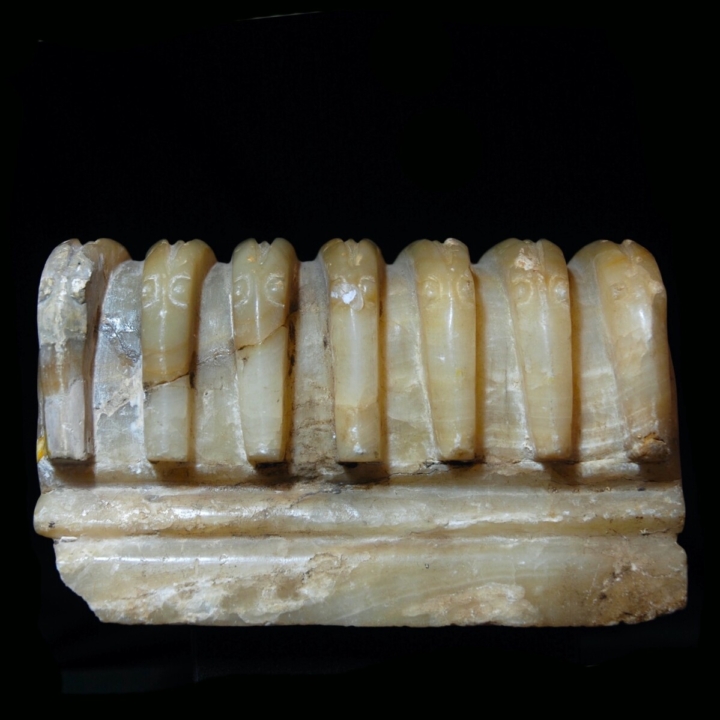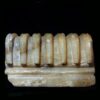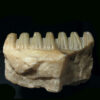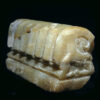South Arabian Ibex Frieze from an Alabaster Altar
Culture: Sabaean
Period: 4th-3rd century B.C.
Material: Alabaster
Dimensions: 11.2 cm x 18 cm
Price: Sold
Ref: 6429
Provenance: From the private estate of the renowned Parisian art dealer François Antonovich (born 1934), acquired in the 1970s.
Condition: Reassembled from three pieces, where the break runs through the three left ibexes. The four right ibexes are intact except for some minor wear.
Description: Alabaster frieze with seven, stylized ibexes which form the end of an altar slab or an offering table. The ibexes are set en face next to each other. The sculptural heads are over-sized and end at the bottom sharp-edged. The eyes are round and button shaped. Only in profile the entire body of the animals reveals itself with the rolled-up horns and bent legs, where the hooves are touching each other. Worked out in flat relief, the body is in relation to the head too small, which is typical for Sabaean art, where the focus lies on the head. Ibex friezes can also be found as a decorative element in the architectual structure of sacred buildings – for example on the Bar’an temple of Ma-rib. In addition to the importance as a symbolic animal of various South Arabian deities the ibex also represents fertility. See for the type "Jemen – Kunst und Archäologie im Land der Königin von Saba", Wilfried Seipel (editor), no. 230, pages 319-320, as well as no. 234, pages 321-322.






